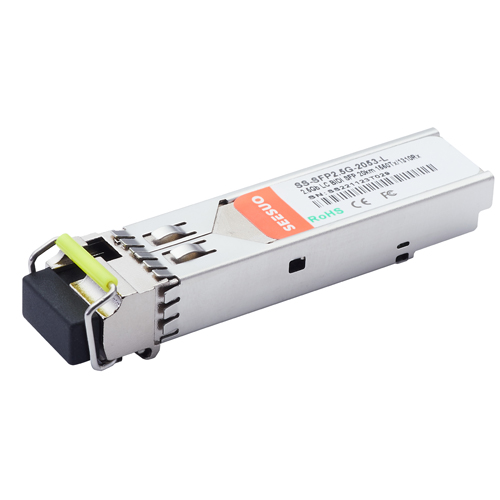- Related articles
- Optical Transceivers for Cisco WS-C3650-24TS-S-RF Switch
- Optical Transceivers for Cisco SG500X-48P-K9-G5 Switch
- Difference between XENPAK and CSFP
- All Cisco GLC-TA's information (Specs, Compatibility matrix)
- How to Find What Ethernet Controller Card I'm using?
- The Things You Need to Know about 100GBASE-CR4 Ethernet Standards
- Optical Transceivers for Cisco N5K-C5548UP-DEMO Switch
- Types of network card speed
- What is a transceiver module?
- Optical Transceivers for Cisco IE-2000-16TC-G-E Switch

WDM transceiver means wavelength-division multiplexing transceiver and this is a technology which multiplexes a number of optical carrier signals onto a single optical fiber by using different wavelengths of laser light. This technique enables bidirectional communications over one strand of fiber, as well as multiplication of capacity.

The WDM transceiver is commonly applied to an optical carrier (which is typically described by its wavelength), whereas frequency-division multiplexing typically applies to a radio carrier (which is more often described by frequency). Since wavelength and frequency are tied together through a simple directly inverse relationship, in which the product of frequency and wavelength equals c (the propagation speed of light), the two terms actually describe the same concept.
.png)
A WDM transceiver system uses a multiplexer at the transmitter to join the several signals together, and a demultiplexer at the receiver to split them apart. With the right type of fiber it is possible to have a device that does both simultaneously, and can function as an optical add-drop multiplexer. The optical filtering devices used have conventionally been etalons (stable solid-state single-frequency Fabry–Pérot interferometers in the form of thin-film-coated optical glass).
The concept was first published in 1978, and by 1980 WDM systems were being realized in the laboratory. The first WDM systems combined only two signals. Modern systems can handle up to 160 signals and can thus expand a basic 100 Gbit/s system over a single fiber pair to over 16 Tbit/s.
WDM transceivers are popular with telecommunications companies because they allow them to expand the capacity of the network without laying more fiber. By using WDM transceivers and optical amplifiers, they can accommodate several generations of technology development in their optical infrastructure without having to overhaul the backbone network. Capacity of a given link can be expanded simply by upgrading the multiplexers and demultiplexers at each end.This is often done by use of optical-to-electrical-to-optical (O/E/O) translation at the very edge of the transport network, thus permitting interoperation with existing equipment with optical interfaces.
Most WDM transceiver operate on single-mode fiber optical cables, which have a core diameter of 9 µm. Certain forms of WDM can also be used in multi-mode fiber cables (also known as premises cables) which have core diameters of 50 or 62.5 µm.
What is the difference between WDM & CWDM?
The primary difference between DWDM and CWDM is the channel spacing (CWDM has almost 100 times wider channel spacing) and the required frequency stability. Due to wider CWDM channels, the number of channels (lambdas) available on the same link is significantly reduced, but the optical interface components do not have to be as precise as DWDM components. CWDM equipment is thus significantly cheaper than DWDM equipment.
Cozlink.com offers a high quality WDM transceiver. They also have a big variety of other components, optoelectronic devices including transmission and reception of two parts. You could also check their other products that will meet your needs.
Please click to check more related concepts:
| Transceivers Package | Type | Application |
| SFP | ||
| SFP+ | ||
| XFP | ||
| QSFP+ | ||
| X2 | ||
| GBIC | ||
| CFP | ||





















































